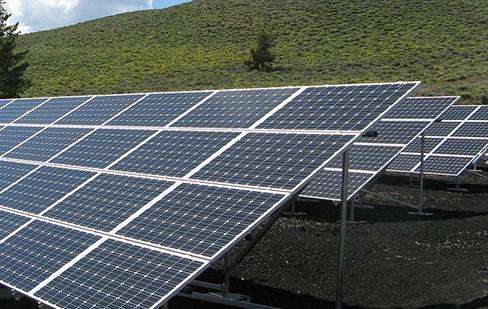To put it simply, the electrical energy of water electrolysis is much greater than the energy of combustion!
According to conservation of energy, regardless of losses, the cyclic reaction simply maintains equilibrium without consuming energy. However, in reality, there are always losses, so let alone the use, whether it can be maintained is still a question. question.
The current method of using water as a fuel mainly uses part of the sun's rays and catalysts to break down the water.
Before there is mature technology, it is just a tasteless piece of food, and it is a shame to throw it away!
Under normal circumstances, why can't water be directly transformed into hydrogen and oxygen as fuel?
The chemical equation for the reaction of breaking down water to produce hydrogen andoxygen under electrical conditions:
2H?O=Electricity= 2H?↑ +O?↑
During the electrolysis of water, oxygen is produced at the anode and hydrogen is produced at the cathode.
There are hydrogen ions and hydroxyl ions in water. Under the condition of electricity in water, hydrogen ions move towards the cathode. The four hydrogen ions lose four charges and produce two hydrogen molecules, hydroxide. The ions move towards the anode and after losing 4 electrons from the 4 hydroxyl ions, 2 water molecules and one oxygen molecule are produced.
Detailed information:
Electrolyzed water generally refers to the product generated after the electrolysis of water containing salt (such as sodium sulfatedium, table salt is not allowed and chlorine gas will be generated). The electrolyzed water itself is neutral and other ions can be added, or it can be separated by a semi-permeable membrane to generate water with two properties. One of them is alkaline ionized water and the other is acidic ionized water.
Electrolyzed water using sodium chloride as the electrolyte contained in water will contain sodium hydroxide, hypochlorous acid and sodium hypochlorite after electrolysis.
Electrolyzed water generally refers to the product generated after the electrolysis of water containing salt (such as sodium chloride). The electrolyzed water itself is neutral and other ions can be added, or it can be separated by a semi-permeable membrane to generate water with two properties.
One is alkaline ionized water and the other is acidic ionized water. Electrolyzed water using sodium chloride cas electrolyte contained in water will contain sodium hydroxide, hypochlorous acid and sodium hypochlorite after electrolysis (if pure water undergoes electrolysis, only hydroxide ions, hydrogen gas, oxygen and hydrogen ions will be produced).
Under certain conditions, the acidic electrolyzed water produced after electrolysis can be used for sterilization. Oxygen generated at the electrode based on the principle of electrolysis will combine with chlorine to form an aqueous solution of hypochlorite or chlorite ions at a lower pH value (e.g. pH < 2.7) .
Also, although some claim that alkaline electrolyzed water is intended to "neutralize the acidic constitution", in reality, electrolysis produces When alkaline water reaches the stomach, it will be transformed in acid by the highly acidic stomach acid.
At present, in addition to the photocatalytic decomposition ofA single-crystalline TiO2 electrode, first reported in 1972 by two professors, Fujishima A and Honda K, of the University of Tokyo, Japan Water produces hydrogen gas. Until now, no very good catalyst has been found that can quickly decompose water into hydrogen and oxygen.
Water cannot replace gasoline as a fuel; water is not flammable and cannot be used as fuel. Hydrogen is produced by the decomposition of water under certain conditions and can be used as fuel. It is impossible for water to transform into gasoline because the two components are different; otherwise it would violate the law of conservation of mass.
Hydrogen and oxygen have higher energy than water, so combining the two in water releases energy, while breaking down water into hydrogen and Oxygen requires energy. Hydrogen and oxygen in water are in a very stable statee (very low energy). If water can produce a substance with less energy through chemical changes, water can be used as fuel to release energy. However, the current earth environment and the accumulation of human chemical knowledge over hundreds of years have not yet discovered this substance, so water cannot yet be used as fuel on earth .
The existence of hydrogen bonds affects the morphology, chemical activity, etc. fabrics. Hydrogen bonds in water make water very stable. Only a high temperature of around 1300°C or electricity can decompose water into oxygen. and hydrogen (volume ratio 1:2) Since the cost of electrolysis of water and decomposition of water at high temperature is too high, scientists are looking for a new type of catalyst that can transform the water into hydrogen and oxygen at room temperaturee, but there are currently no reports on this subject.














